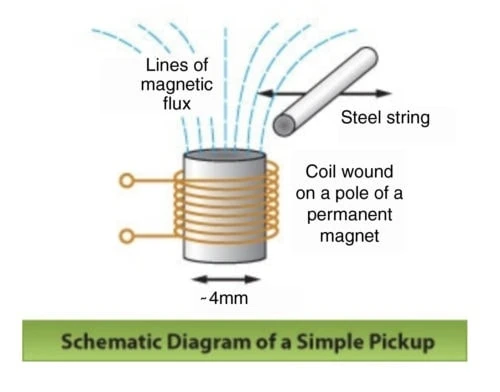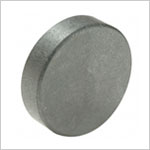One of our favorite applications is magnets for pickups. There are many things to consider if you are looking to optimize your guitar to its full potential, and pickups are arguably one of the most important elements of customization. If you are a skilled designer of pickups looking to create the best sound from your instrument, you have a choice between alnico and ceramic magnets when it comes to magnetic guitar pickups.
Adams Magnetic Products supports the music industry every day by supplying high-quality alnico and ceramic magnets for every style pickup made. Select from our stock sizes, or we can produce to your exact specifications.
Before we dive into the details, let’s answer the casual surfer here by answering: what is a magnet pickup even made of? Basically, pickups consist of magnets and wires. However, the way in which these components work together is rather complicated. A length of wire is first coiled around the magnet, which creates a magnetic field. Whenever a string vibrates in that field, the coil detects field changes and then creates a voltage, thus producing that perfect sound. As far as the resources that go into making the magnets, that where Adams steps in.
Probably the biggest variables that influence the decision between alnico and ceramic magnets for guitar pickups are their specific uses or effects sought within the realm of pickups. Let’s start with alnico. They are known to be very strong and durable, which is what many pickup manufacturers love about them. Because of this, they are also used for things such as loudspeakers and motors. But any seasoned musician will argue that its best purpose is served planted into the pickup of your guitar. These durable magnets are known for a smooth, melodic sound when it comes to the tone of the instrument, and different from the sound of the circuit created with ceramic magnets.
Alnico Magnets for Pickups
Alnico magnets come in three main grades: 2, 3, and 5:
- Alnico 2 traces back to the days of the 1950 Telecasters. This class seems to work well for middle-position pickups. It is known by its sweet, vintage tone, and there seem to be little disadvantages to using it.
- Alnico 3 is the weakest of the three grades. It contains less cobalt, a core ingredient in the rest of the Alnico family. Because of the decrease in magnetic pull, it works wonders for neck pickups, where there is the most string vibration.
- Alnico 5 is the strongest of the three alnico grades. The tone and response of the magnet is more powerful than its two cousins. This makes it perfect for bridge pickups, where there is the least vibration. If you want an aggressive, in-your-face kind of sound, Alnico 5 is your best bet.
To learn see examples and more data about alnico magnets for pickups, visit our alnico rods page.
Ceramic Magnets for Pickups
Alnico may be the most popular, but ceramic magnets for pickups are also an option to consider. As mentioned earlier, it has a harsher edge than alnico. The two have a noticeably different sound, albeit both very good. And ceramic magnets are less expensive, making them attractive to use in manufacturing budget or entry-level pickups.
Learn more about ceramic magnets for pickups; visit our ceramic discs page.
For more information, samples or pricing, please contact us with your designs or ideas using magnets for pickups.






